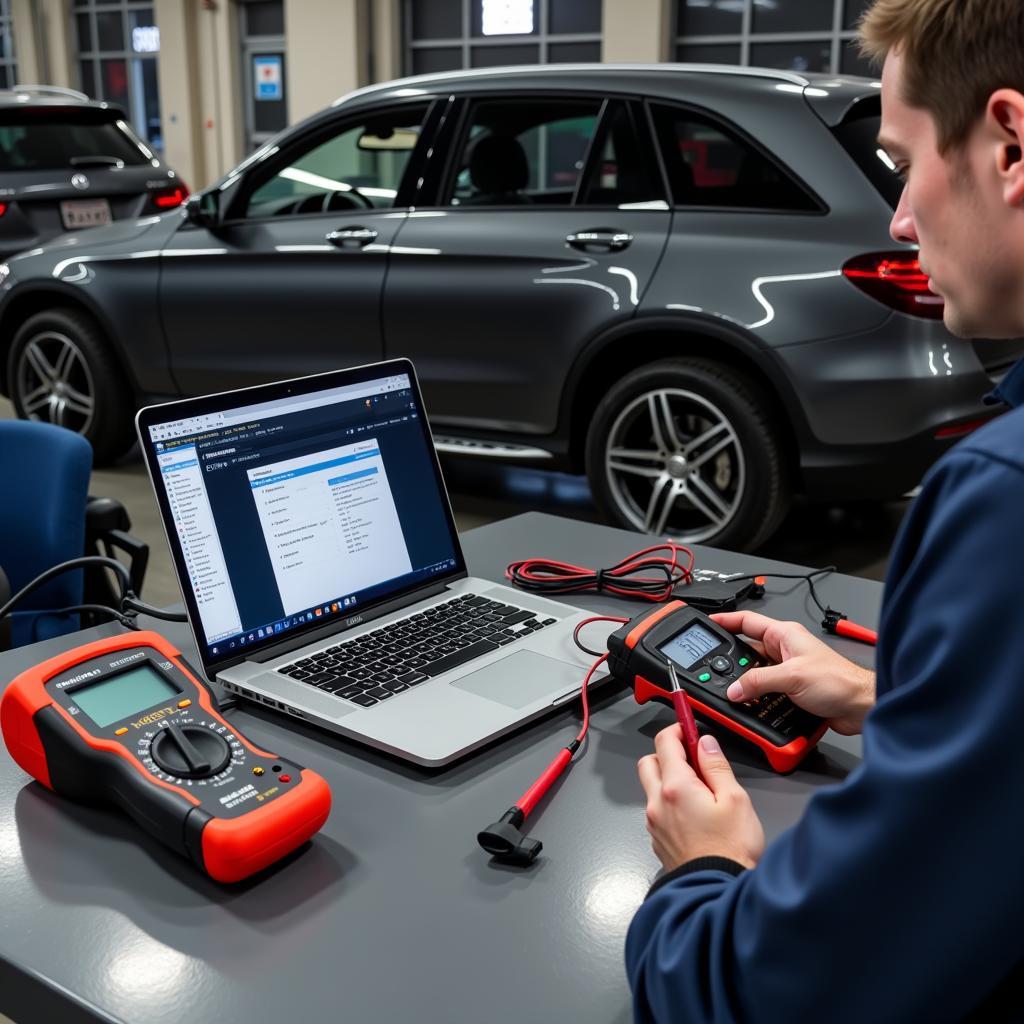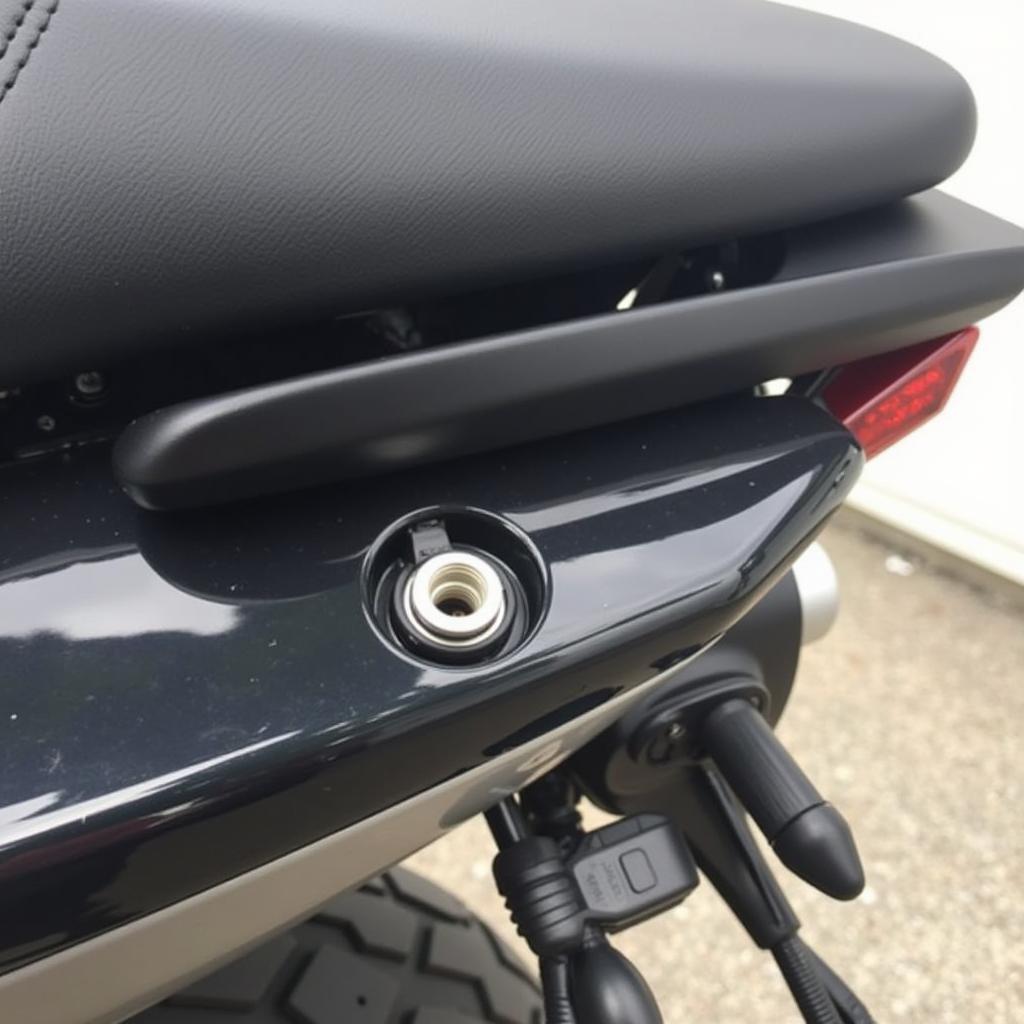The “Windows Diagnostic Tool Driver” isn’t a term you’d typically encounter in the automotive world. It seems there might be a misunderstanding about how car diagnostics work. While Windows-based software plays a role in some advanced automotive tools, diagnosing car problems usually involves specialized equipment and software tailored for vehicles. Let’s break down how car diagnostics actually work and explore the tools professionals use to pinpoint and resolve issues.
Understanding Car Diagnostic Tools
Modern vehicles are complex machines equipped with Electronic Control Units (ECUs). These ECUs act as the brains of various systems, from engine management and transmission control to airbag deployment and anti-lock brakes. When something goes wrong, these ECUs store Diagnostic Trouble Codes (DTCs), which are essentially error codes that provide clues about the problem.
Car diagnostic tools, also known as OBD2 scanners (On-Board Diagnostics), connect to a vehicle’s OBD2 port to read these DTCs.
[image-1|obd2-scanner-connected-to-car|Car Diagnostic Tool Connected|A mechanic is using an OBD2 scanner plugged into a car’s port, with the scanner’s screen displaying diagnostic information.]
Here’s what these tools can do:
- Read & Clear DTCs: Retrieve and erase error codes stored in the vehicle’s ECUs.
- Display Live Data: Monitor real-time sensor data, such as engine RPM, coolant temperature, and oxygen sensor readings.
- Perform Actuator Tests: Command specific components (like fuel injectors or solenoids) to activate, helping diagnose electrical or mechanical issues.
- Access Advanced Functions: Depending on the tool and vehicle, you might be able to perform tasks like key programming, module coding, or resetting service lights.
Types of Car Diagnostic Tools
There are several categories of car diagnostic tools:
-
Basic Code Readers: Affordable and primarily designed to read and clear basic DTCs. These are suitable for DIY enthusiasts who want to get a general idea of why their check engine light is on.
-
Professional Handheld Scanners: More advanced tools used by mechanics and technicians. They offer a wider range of functions, including live data streaming, actuator tests, and access to manufacturer-specific codes.
-
PC-Based Diagnostic Software: Software applications that connect to your computer (sometimes requiring a separate interface device) to provide in-depth diagnostic capabilities. These are often used by experienced technicians and enthusiasts who want extensive control and data analysis.
[image-2|mechanic-using-pc-based-diagnostic-software|PC-Based Diagnostic Software in Use|A computer screen displays complex diagnostic data and graphs while connected to a car, indicating the use of specialized software for in-depth analysis.]
Common Uses of Diagnostic Tools
Here are some scenarios where these tools are essential:
- Check Engine Light Diagnosis: Pinpoint the reason behind a check engine light, which could be anything from a loose gas cap to a failing oxygen sensor.
- Sensor Monitoring: Observe sensor readings in real time to diagnose issues with fuel delivery, emissions, or engine performance.
- Component Testing: Activate specific components to ensure they are functioning correctly, such as testing fuel injectors or solenoids.
- Maintenance & Repair: Resetting service reminders, performing electronic parking brake service, or coding new components after replacement.
Choosing the Right Tool
Selecting the right tool depends on your needs and skill level:
-
DIY Enthusiasts: A basic code reader or a more affordable handheld scanner is usually sufficient for reading and clearing codes, checking engine light reasons, and monitoring basic sensor data.
-
Mechanics & Technicians: A professional-grade handheld scanner or PC-based software is essential for comprehensive diagnostics, advanced functions, and access to manufacturer-specific information.
-
Specialized Applications: For specific tasks like key programming or ECU flashing, dedicated tools designed for those purposes might be necessary.
The Role of Windows in Car Diagnostics
While the term “windows diagnostic tool driver” isn’t directly related to car diagnostics, Windows-based operating systems do play a role in some advanced tools.
For example, PC-based diagnostic software often runs on Windows operating systems. These software applications might require specific drivers to ensure communication between the computer, the diagnostic interface, and the vehicle’s ECUs.
[image-3|mechanic-troubleshooting-software-issue|Troubleshooting Software Issues|A frustrated mechanic is on the phone, potentially seeking technical support for a software or driver issue related to his diagnostic tools.]
Importance of Reliable Drivers
Just like any other computer peripheral, ensuring you have the correct and up-to-date drivers is crucial for these tools to function correctly. Outdated or incompatible drivers can lead to:
- Connection Issues: Failure to establish communication with the vehicle’s ECUs.
- Data Errors: Inaccurate or incomplete data readings, making diagnosis difficult.
- Software Crashes: Instability or malfunctions within the diagnostic software.
Tips for Driver Management
- Regular Updates: Check the manufacturer’s website for the latest drivers for your specific diagnostic interface or software.
- Compatibility: Ensure the drivers are compatible with your Windows operating system version.
- Proper Installation: Follow the manufacturer’s instructions carefully when installing or updating drivers.
Getting Professional Help
While many diagnostic tools are available for DIY enthusiasts, complex issues often require the expertise of a qualified mechanic. If you’re facing persistent car troubles or need assistance with advanced diagnostics, don’t hesitate to seek professional help.
Conclusion
Understanding the tools and techniques of car diagnostics can empower you to take more control of your vehicle’s maintenance. While the term “windows diagnostic tool driver” might not be directly applicable, Windows-based systems often play a role in the more sophisticated tools used by professionals. Remember, whether you’re a DIYer or rely on a trusted mechanic, accurate diagnostics are key to keeping your car running smoothly.
Need help with car diagnostics? ScanToolUS offers a range of diagnostic tools and expert advice. Contact us at +1 (641) 206-8880 or visit our office at 1615 S Laramie Ave, Cicero, IL 60804, USA.
FAQs
-
What should I do if my OBD2 scanner isn’t connecting to my car?
- Check that the scanner is properly plugged into the OBD2 port.
- Ensure the vehicle’s ignition is turned to the “on” position (engine not running).
- Verify that the scanner is compatible with your vehicle’s make, model, and year.
-
Can I use a diagnostic tool to fix my car myself?
- While you can use these tools to identify issues, repairs often require mechanical knowledge and specialized tools.
-
What’s the difference between a generic and manufacturer-specific code reader?
- Generic readers interpret standard OBD2 codes, while manufacturer-specific tools access proprietary codes for more detailed diagnostics.
-
How often should I have my car professionally diagnosed?
- It’s a good idea to have your vehicle checked annually or as part of your regular maintenance schedule.
-
What are some reputable brands of car diagnostic tools?
- Autel, Innova, BlueDriver, Foxwell, and Launch are known for producing reliable diagnostic tools.


